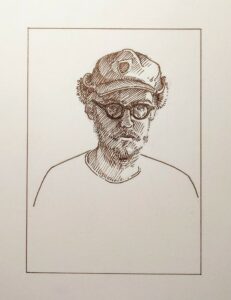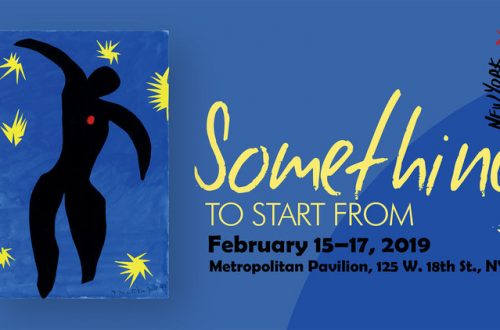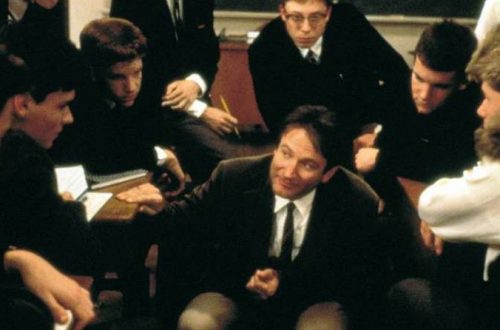by Andrew Carr
In a recent episode of Fresh Air, music critic Kevin Whitehead shared a remarkable insight about improvisation and coherence. The remark came in the context of his review of Craig Taborn’s new album Shadow Plays. Taborn is a jazz piano player, and his album is made up of what Whitehead calls “instant compositions.” The tracks are all improvised live. And yet these performances nevertheless unfold with the sort of complexity, organization, and formal coherence that one associates with music fully worked out in advance. In effect, Taborn manages to create unified pieces spontaneously. So, although the music possesses the dynamism of an unrehearsed exploration, it also consistently falls into place as if following a prearranged pattern.
How does one account for this? For music which follows a plan that hasn’t been made? Music which evolves organically, in real time, into a coherent structure? Talent is one answer, and Taborn has it. Training and experience are also clearly worth acknowledging as necessary foundations for this sort of work. But these answers leave something to be desired, and it’s here that Whitehead makes a beautiful suggestion:
“It’s not, I think, that Taborn knows where he’s going way in advance, but that he recalls where he’s been.”
We tend to think of improvisation as forward facing, to focus on the limitless possibilities of undetermined moments arriving one after another, with the improviser’s flow of intuitive decisions keeping pace. It’s this daredevil encounter with time — the artist’s courage and wherewithal to generate and sustain creative output, along with the knowledge that they could trip up at any moment — that makes an improvised performance so thrilling. To watch someone succeed again and again and again feels improbable, and exhilarating. From this perspective the question of how someone could improvise highly organized and coherent compositions is truly confounding.
What this sort of image fails to appreciate, however, and what Whitehead draws our attention to, is that for all its present-tense energy, improvisation is deeply retrospective. What propels the improviser into the next moment is the momentum of all the moments behind him, which narrows the limitless possibilities of the present down to a meaningful trajectory. The job of the artist is not to invent ex nihilo over and over, but rather to develop this trajectory, this history with understanding and discernment.
In a truly unified work of art, all the pieces stand in meaningful relationship to each other. It is as if the different elements are aware of each other, and adjust themselves to that sense of a larger whole. Each motif or theme should be significant in its own right, but should also take on another, deeper significance with regard to the role it plays in the overall scheme. Under the present-tense account of improvisation, this level of coherence seems next to impossible. How would one even know where to start? How can one’s beginning be aware of and take into account an ending that doesn’t exist yet?
But if we take Whitehead’s account of improvisation as “recall” seriously, the beginning doesn’t need to predict the end. The end can fulfill the beginning. A retrospective view can look over the material that has been developed throughout a session and create a conclusion that fits. And the incredibly obvious but still beautiful thing about pieces which fit, is that they both fit. So that at the very moment that an ending is found which fulfills its beginning, the beginning is suddenly found to anticipate just such an end. The work becomes coherent because it listens to itself.
This insight has implications that extend well beyond the realm of musical composition, into the personal, the political, the spiritual. Because really, it’s an observation about how we navigate time. It’s a shift from understanding coherence strictly as something we imagine, anticipate and pursue — to a vision which appreciates that coherence and meaning has just as much to do with recognizing, respecting and acting with one’s past in mind.
How rarely the future adheres to our plans and predictions. How devastating and confusing it can be when a preciously anticipated pattern breaks down. When time disregards our expectations, we’re stunned, and hardly know how to begin playing again. If, however, coherence is more than a matter of the future unfolding according to some plan, then in setting aside our predictions, we make room for the meaning, unanticipated, that can arise out of a present that honestly seeks to fulfill, even redeem, our complicated past.
Click here to listen to Shadow Plays on Spotify or purchase the album.
To learn more about Craig Taborn or explore his conceptual work, visit his website at CraigTaborn.com.

Andrew Carr is a writer, painter, and teacher from St. Paul, MN. He loves cinema, short stories, and Saturday night jazz. You can find his artwork at andrewgrumcarr.com or follow him on instagram @andrewgrumcarr
Header Image: “Piano strings” by kevin dooley is licensed under CC BY 2.0 (cropped)






One Comment
Henry Lewis
Reminds me of what René Daumal, French spiritual writer and poet, once said, “You cannot stay on the summit forever; you have to come down again. So why bother in the first place? Just this: What is above knows what is below, but what is below does not know what is above. One climbs, one sees. One descends, one sees no longer, but one has seen. There is an art of finding one’s direction in the lower regions by the memory of what one saw higher up. When one can no longer see, one can at least still know.”